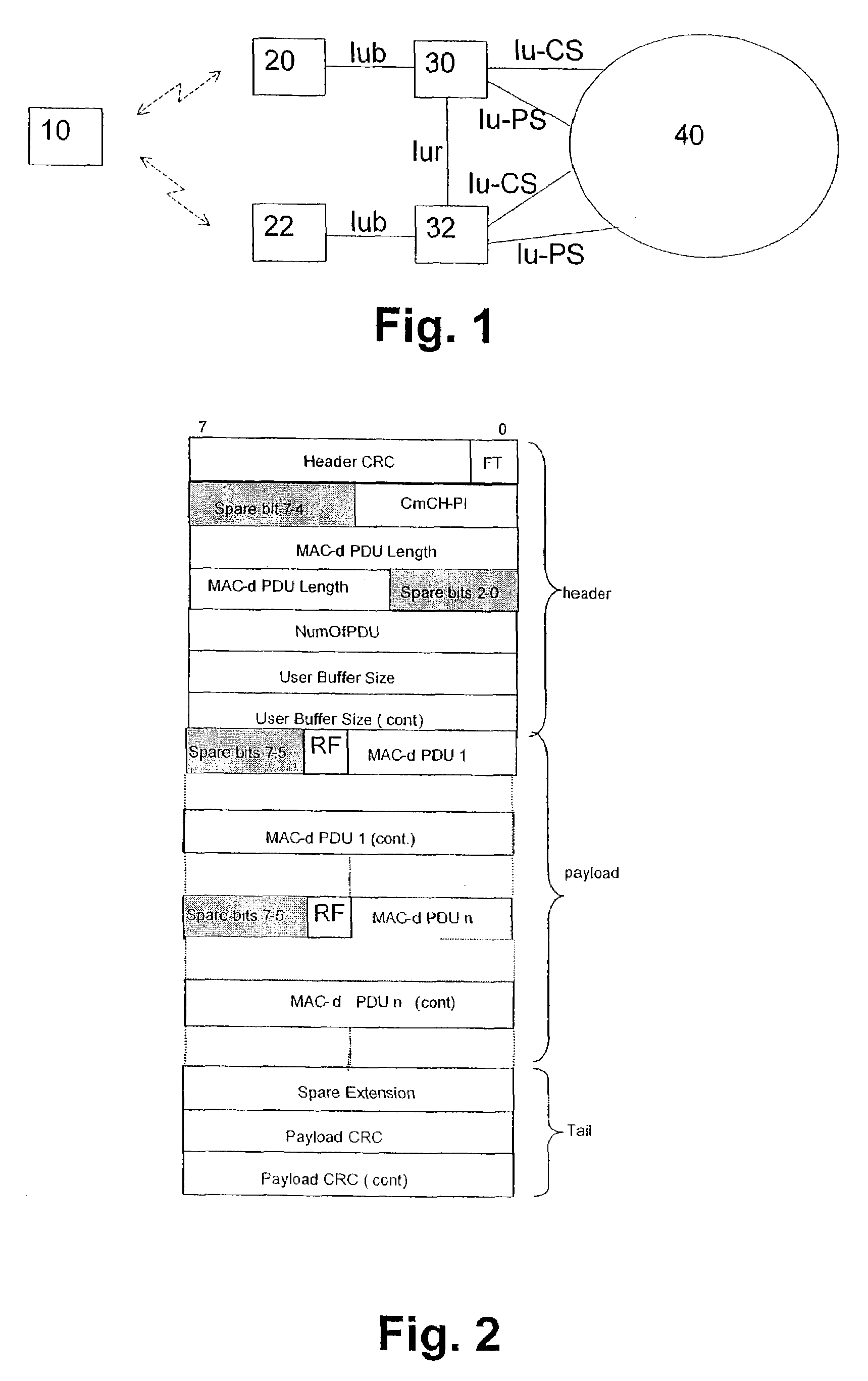Scheduling retransmission in access networks
a technology of access network and retransmission delay, applied in data switching network, frequency-division multiplex, instruments, etc., can solve the problems of low utilization of transmission medium, unsatisfactory tcp slow start, excessive and highly undesirable load on this link, etc., and achieve the effect of reducing the delay of retransmission
- Summary
- Abstract
- Description
- Claims
- Application Information
AI Technical Summary
Benefits of technology
Problems solved by technology
Method used
Image
Examples
Embodiment Construction
[0033]The embodiments of the present invention will now be described on the basis of a third generation WCDMA radio access network architecture as shown in FIG. 1.
[0034]FIG. 1 shows a terminal device or UE 10 connected via an air interface to a first Node-B 20 and / or a second Node-B 22. The first and second Node-Bs 20, 22 are connected via respective lub interfaces to first and second radio network controllers (RNCs) 30, 32 which are connected to each other via a lur interface. The Node-Bs 20, 22 are logical nodes responsible for radio transmission and reception in one or more cells to / from the UE 10 and terminate the lub interface towards the respective RNCs 30, 32. The RNCs 30, 32 are in charge of controlling use and integrity of radio resources within the radio access network. Furthermore, the RNCs 30, 32 provide connections to a third generation core network 40, e.g. a UMTS (Universal Mobile Telecommunications System) network for both circuit-switched traffic via a lu-CS interfa...
PUM
 Login to View More
Login to View More Abstract
Description
Claims
Application Information
 Login to View More
Login to View More - R&D
- Intellectual Property
- Life Sciences
- Materials
- Tech Scout
- Unparalleled Data Quality
- Higher Quality Content
- 60% Fewer Hallucinations
Browse by: Latest US Patents, China's latest patents, Technical Efficacy Thesaurus, Application Domain, Technology Topic, Popular Technical Reports.
© 2025 PatSnap. All rights reserved.Legal|Privacy policy|Modern Slavery Act Transparency Statement|Sitemap|About US| Contact US: help@patsnap.com



